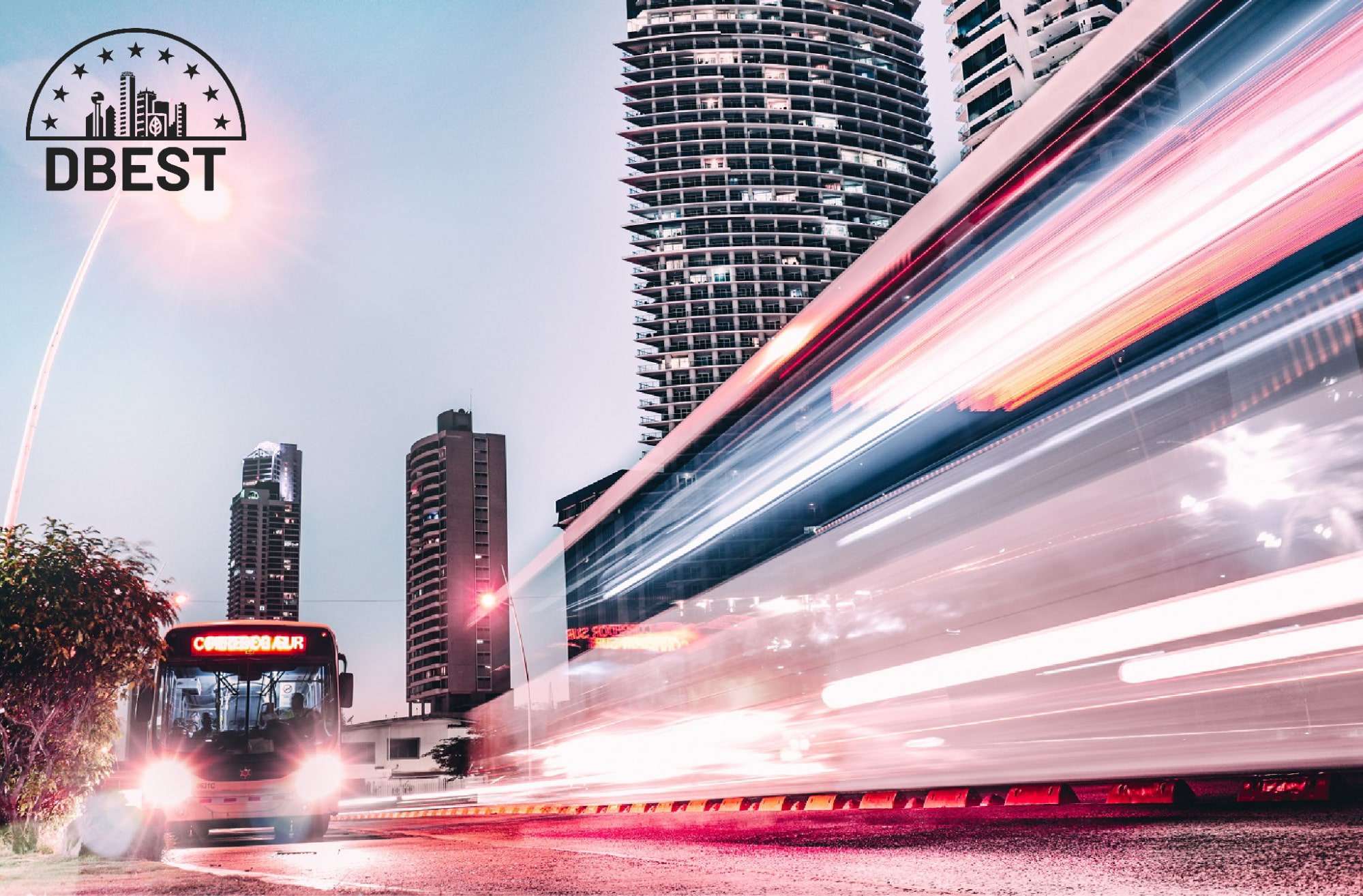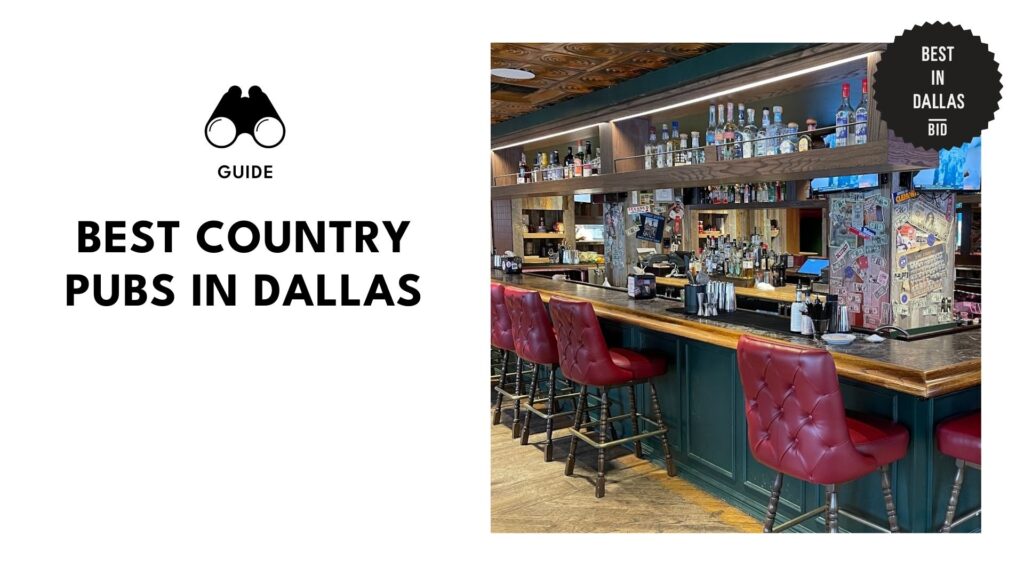Categories > Guides and Tips

Living in Dallas Without a Car: Is it possible?
- Can you get around Dallas without a car?
- What does public transportation look like in Dallas?
- Available Transportation Systems in Dallas
- Public Transportation
- Dallas Area Rapid Transit (DART)
- Light Rail System
- Buses
- Commuter Train
- Trinity Railway Express (TRE)
- Dallas Streetcar
- McKinney Avenue Trolley (MATA)
- GoLink
- Private Transportation
- Taxis
- Ride-Hailing Apps
- Private Car Services
- Shuttle Services
- Shared-Ride Option
- Express Transportation
- Budget-Friendly Option
- Airport Shuttles
- Is Dallas a walkable city?
- Advantages of Living without a Car in Dallas
- Cost Savings
- Reduced Stress
- Health and Fitness
- Public Transportation Options
- Ride-Sharing and Car-Sharing Services
- Environmental Impact
- Urban Exploration
- Community Engagement
- Disadvantages of Living without a Car in Dallas
- Limited Mobility
- Inconvenience for Daily Tasks
- Weather Considerations
- Limited Access to Certain Areas
- Time-Consuming Commutes
- Dependence on Alternative Transportation Options
- Reduced Flexibility
As a local living in Dallas, I can definitely relate to the joys and challenges of navigating this vibrant city without a car. If you’re a resident or a visitor, you might be wondering if it’s possible to live car-free in the sprawling metropolis that is Dallas.
Well, let me tell you, it absolutely is!
Dallas offers a range of transportation options that can take you where you need to go, from work to entertainment and everything in between.
In this guide, I’ll share some insights and tips to help you embrace the car-free lifestyle in the Big D. So, hop on board as we explore the exciting possibilities of living car-free in Dallas!
Can you get around Dallas without a car?

You can get around Dallas without a car. The city offers a comprehensive public transportation system with buses, light rail, and commuter trains, making it convenient to navigate and explore without relying on a personal vehicle.
Dallas has an extensive public transportation system that can be relied upon to navigate the city without a car.
The Dallas Area Rapid Transit (DART) operates a network of buses, light rail trains, and commuter trains, providing convenient and affordable options for commuters and residents alike.
For instance, DART’s light rail system spans over 90 miles, with multiple lines connecting various neighborhoods, shopping centers, and entertainment districts.
This means you can easily hop on a train to explore popular destinations like the Arts District, Deep Ellum, or the West End. With over 60 light rail stations across the city, you’ll find it convenient to reach your desired location.
Moreover, DART operates an extensive bus network with numerous routes covering the city and its suburbs. Buses are equipped with features like real-time arrival information and accessible facilities, ensuring a comfortable and reliable travel experience.
To illustrate the effectiveness of public transportation, consider this: a study conducted by the Texas A&M Transportation Institute found that taking public transit in Dallas can save commuters an average of $10,000 per year compared to owning a car.
This includes savings on fuel, parking fees, and maintenance costs.
| Cost | Average |
| Fuel | $2,440 |
| Parking | $1,200 |
| Maintenance | $1,000 |
| Insurance | $1,500 |
| Depreciation | $3,000 |
| Total | $9,140 |
By relying on Dallas’ public transportation system, not only can you save money, but you also contribute to reducing traffic congestion and lowering carbon emissions.
It’s an environmentally friendly way to get around the city while enjoying the convenience of reaching your desired destinations hassle-free.
What does public transportation look like in Dallas?

Dallas has a well-connected public transportation system managed by DART. It includes buses, light rail, and streetcars that offer convenient connectivity.
Buses serve various routes, while light rail lines connect downtown with the suburbs. Streetcars operate in the downtown area.
The extensive bus system covers a wide range of routes, ensuring that people can reach their destinations conveniently throughout the city.
For instance, the DART bus service operates over 140 routes with a fleet of around 650 buses that run on weekdays, weekends, and even holidays.
This comprehensive coverage ensures that commuters have access to public transportation regardless of their location or time of day.

In addition to the bus system, Dallas has an efficient light rail network that connects the downtown area with various suburbs.
The light rail lines provide a reliable and comfortable mode of transportation for daily commuters and leisure travelers alike.
With approximately 90 miles of track and more than 60 stations, the light rail system in Dallas serves as a vital link in the public transportation network.
The Red and Blue lines are among the busiest routes, carrying passengers to major destinations such as Dallas/Fort Worth International Airport, downtown Dallas, and suburban areas like Plano and Garland.
The light rail system’s reliability and frequency make it a popular choice for commuters looking for an efficient and sustainable mode of transportation.
Moreover, Dallas offers streetcars that operate within the downtown area, enhancing connectivity and providing a unique transportation experience.
The Dallas Streetcar is a free service that connects various points of interest in downtown Dallas, such as the Bishop Arts District, the Omni Dallas Hotel, and the Kay Bailey Hutchison Convention Center.
The streetcar service not only provides a convenient way to navigate the downtown area but also adds a touch of charm and nostalgia to the city’s transportation landscape.
Available Transportation Systems in Dallas
Transportation options in Dallas include the DART system (light rail, buses, and trains); ride-hailing apps (Uber, Lyft); taxis; and private cars.
Additionally, there are shuttle services (SuperShuttle, GoLink), airport shuttles, and trolleys (McKinney Ave., Dallas Streetcar).
These options provide residents and visitors with a comprehensive range of transportation choices to navigate the city conveniently and efficiently.
Public Transportation
Public transportation in Dallas offers a comprehensive and diverse network of services designed to meet the transportation needs of residents and visitors alike.
With the Dallas Area Rapid Transit (DART) system at its core, the city provides various modes of public transit, including light rail, buses, commuter trains, streetcars, and innovative services like GoLink.
These transportation options connect neighborhoods, suburbs, and key destinations, ensuring efficient and convenient travel throughout the Dallas metropolitan area.
Dallas’s public transportation system offers a reliable, sustainable, and cost-effective alternative to driving. Whether you’re commuting to work or exploring downtown, you can rely on the system to provide efficient and convenient travel options.
Dallas Area Rapid Transit (DART)

Dallas Area Rapid Transit (DART) is the primary public transportation provider in the Dallas metropolitan area of Texas.
It offers a comprehensive network of transportation services, including a light rail system, buses, and a commuter train, to serve the transportation needs of residents and visitors.
Light Rail System
DART’s light rail system is a reliable and efficient mode of transportation, with multiple lines connecting neighborhoods, suburbs, and key destinations throughout Dallas.
Spanning over 93 miles and serving more than 60 stations, the dedicated tracks provide convenient access to downtown Dallas, major employment centers, educational institutions, medical facilities, and entertainment venues.
Buses
DART’s extensive bus network covers urban areas, suburbs, and outlying communities, ensuring comprehensive connectivity within the region.
With designated routes and multiple stops, passengers can easily travel to different parts of the city, including areas not directly served by the light rail system.
Commuter Train
The Trinity Railway Express (TRE), operated by DART, offers a commuter train service connecting downtown Dallas with Fort Worth.
Ideal for commuters traveling between the two cities, the TRE operates on a regular schedule and provides convenient amenities like comfortable seating, onboard restrooms, and free Wi-Fi.
Trinity Railway Express (TRE)

The Trinity Railway Express (TRE) is a commuter train service that operates between the cities of Dallas and Fort Worth in the state of Texas, United States.
It provides a convenient and efficient mode of transportation for commuters traveling between these two major urban areas.
The TRE is jointly operated by two transit agencies: Dallas Area Rapid Transit (DART) and the Fort Worth Transportation Authority (FWTA), commonly known as Trinity Metro.
This partnership ensures seamless coordination and integration of the train service within the transportation networks of both cities.
The TRE route stretches approximately 34 miles (55 kilometers) from Union Station in downtown Dallas to the T&P Station in downtown Fort Worth.

Along the way, the train stops at several stations, including Dallas Union Station, Medical/Market Center, Victory Station, Burbank Station, CentrePort/DFW Airport Station, and Fort Worth T&P Station, among others.
The train service operates on weekdays and Saturdays, with a limited schedule on Sundays and certain holidays. During peak commute hours, the frequency of trains is increased to accommodate the higher demand.
The typical operating hours for the TRE are from early morning until late evening.
The TRE provides a comfortable and reliable mode of transportation, equipped with amenities such as comfortable seating, air conditioning, and onboard restrooms.
Passengers can enjoy a scenic journey through urban landscapes, passing by various neighborhoods, business districts, and landmarks in both Dallas and Fort Worth.
Commuters and travelers can take advantage of the TRE to avoid traffic congestion, reduce commuting stress, and save on fuel costs.
The train service offers an alternative to driving and helps alleviate road congestion in the busy Dallas-Fort Worth metropolitan area.
Additionally, the TRE connects with other transit options in Dallas and Fort Worth. At Union Station in Dallas, passengers can access DART’s light rail system, providing further connectivity within the Dallas area.
In Fort Worth, the TRE connects with Trinity Metro’s local bus services, allowing passengers to reach their final destinations conveniently.
Dallas Streetcar

The Dallas Streetcar is a mode of transportation in Dallas that operates as a modern streetcar system. It provides a convenient and sustainable way for residents and visitors to travel within downtown Dallas.
Its system follows a 2.45-mile route, connecting various key destinations in the downtown area. The streetcar vehicles used in the system are designed to resemble traditional streetcars while incorporating modern features and technologies.
They are electrically powered, running on tracks embedded in the streets.
The streetcars are equipped with amenities such as air conditioning, comfortable seating, and wheelchair accessibility to ensure a pleasant and inclusive travel experience for passengers.
The route of the Dallas Streetcar passes through several significant locations within downtown Dallas. This includes popular destinations such as the Bishop Arts District, the Kay Bailey Hutchison Convention Center, the Omni Dallas Hotel, and Union Station.

The route allows passengers to conveniently access these areas, making it easier to explore and enjoy the attractions, restaurants, and entertainment options available in downtown Dallas.
The Dallas Streetcar system provides numerous benefits to the community. It offers a sustainable transportation option, reducing the reliance on private vehicles and decreasing traffic congestion.
By promoting public transit usage, the streetcar system contributes to a cleaner environment and improved air quality in the city.
It also enhances connectivity between different neighborhoods and encourages economic development by facilitating access to businesses and cultural sites within downtown Dallas.
Passengers can access the Dallas Streetcar by purchasing tickets at designated stations. The system operates on a fixed schedule, with frequent and reliable service during operational hours.
It is managed by Dallas Area Rapid Transit (DART), the regional transportation authority responsible for public transit in the Dallas-Fort Worth metroplex.
McKinney Avenue Trolley (MATA)

The McKinney Avenue Trolley (MATA) is a historic trolley system that operates in Uptown Dallas.
It provides transportation along McKinney Avenue, a bustling street in the heart of Uptown known for its lively restaurants, shops, and residential areas.
The trolley system was established in 1989 with the goal of revitalizing the Uptown area and offering an alternative mode of transportation for residents and visitors.
The MATA are vintage electric streetcars, originally built in the early 20th century but later restored and refurbished to their former glory.
These charming streetcars add a touch of nostalgia to the Uptown neighborhood and have become an iconic symbol of the area.

The MATA system operates on a fixed route, starting from the Cityplace/Uptown DART Station and running north along McKinney Avenue. The route covers a distance of approximately 3 miles (4.8 kilometers) and includes numerous stops along the way.
Some of the notable destinations along the route include West Village, the Dallas Arts District, and Klyde Warren Park.
One of the key features of the MATA system is that it offers fare-free rides to passengers. This means that anyone can hop on and off the trolleys without needing to purchase a ticket or pay a fare.
The fare-free model is made possible through a combination of public and private funding, including sponsorships and donations.
The McKinney Avenue Trolley provides a convenient and unique way to explore Uptown Dallas, allowing people to hop on and off at various locations of interest.
It’s a popular transportation option for both residents and tourists who want to enjoy the vibrant atmosphere of Uptown, visit local attractions, or dine at the area’s many restaurants and cafes.
GoLink

GoLink is a transportation service provided by Dallas Area Rapid Transit (DART) that offers on-demand, shared-ride bus service in specific areas of Dallas.
It is designed to enhance transportation options and provide convenient and flexible mobility for residents and visitors.
Unlike traditional bus routes with fixed schedules and designated stops, GoLink operates on a more flexible and personalized basis. It utilizes smaller vehicles, such as vans or minibusses, to provide door-to-door service within a defined service area.
The service area for GoLink is typically within a certain radius of a transit center or major activity center.
To use GoLink, passengers need to request a ride by phone, mobile app, or online platform. They provide their pickup and drop-off locations, and the service dispatches a vehicle to pick them up.
GoLink operates on a reservation-based system, meaning passengers need to book their ride in advance, usually within a certain time frame.
Once a ride is scheduled, passengers are given an estimated pickup time and are notified when the vehicle is approaching.
The vehicle may have multiple passengers on board, and the route may vary depending on the specific pickup and drop-off locations of each passenger.
GoLink aims to offer a more flexible and responsive transportation option, particularly in areas where fixed bus routes may not be as efficient or convenient.
It can be particularly beneficial for areas with a lower population density or where demand for public transportation is more sporadic.
By providing shared-ride service, GoLink also helps reduce individual car usage and promote a more sustainable and efficient transportation system.
Private Transportation
When it comes to private transportation in Dallas, there are several options available to cater to different preferences and needs.
From traditional taxis to ride-hailing apps, private car services to shuttle services, and specialized airport shuttles, there’s a mode of transportation to suit every traveler.
Each option has its advantages and disadvantages, including factors like cost, convenience, and comfort.
Whether you’re a resident navigating the city or a visitor exploring Dallas, it’s essential to explore the available private transportation options to find the one that best meets your requirements.
Let’s take a closer look at some of these options.
Taxis

Taxis in downtown Dallas refer to the traditional taxi cabs that are operated by professional drivers and can be hailed or found at designated taxi stands.
These taxis provide a convenient mode of transportation for both residents and visitors in the downtown area.
However, taxis in Dallas can be considered expensive compared to alternative transportation options. The cost of a taxi ride typically includes a base fare, which is the initial fee charged when you enter the taxi, as well as a per-mile or per-minute charge.
Additionally, there may be additional fees for factors like waiting time, tolls, or airport surcharges.
The expense of taxis in downtown Dallas can be attributed to several factors:
- Metered Fare System: Taxis operate on a metered fare system, which means the final fare is determined by the distance traveled or the time spent in the taxi.
This can result in higher costs, especially during peak traffic hours or when covering longer distances.
- Limited Competition: The number of taxi companies in Dallas may be limited compared to other cities, leading to less competition among providers.
Limited competition can contribute to higher fares as there may be less incentive for companies to offer lower prices.
- Operational Costs: Taxi companies have various operational costs to consider, such as vehicle maintenance, fuel expenses, insurance, licensing fees, and driver wages. These costs are factored into the fares charged to passengers.
- Demand and Supply: During busy periods, such as rush hours or special events, the demand for taxis in downtown Dallas may exceed the supply of available taxis.
This increased demand can result in higher fares due to surge pricing or increased competition for available taxis.
To mitigate the cost of taxis, it is advisable to consider alternative transportation options available in downtown Dallas.
These may include ridesharing services like Uber or Lyft, which often offer more competitive pricing, or utilizing public transportation such as buses or light rail systems.
Ride-Hailing Apps

Ride-hailing apps like Uber and Lyft have become increasingly popular in Dallas and many other cities around the world. These apps provide a convenient and affordable alternative to traditional taxi services.
They allow users to request a ride using their smartphone, and a nearby driver affiliated with the platform picks them up and takes them to their desired destination.
One of the key advantages of ride-hailing apps is their affordability. In general, the cost of a ride through Uber or Lyft is often lower compared to taking a traditional taxi.
This is because ride-hailing apps typically operate on a dynamic pricing model, where fares fluctuate based on factors such as demand and distance.
During non-peak times, the prices are usually quite reasonable, making them an attractive option for many commuters and travelers.
However, during peak times, such as rush hours or major events, ride-hailing apps can become more difficult to find. When there is a high demand for rides and a limited number of available drivers, the price surges due to surge pricing.
Surge pricing is a mechanism employed by these apps to encourage more drivers to come online and meet the increased demand. As a result, fares can significantly increase during these peak periods.
The increased difficulty of finding a ride during peak times is mainly due to the imbalance between the number of drivers and the number of passengers seeking rides.
Some drivers may choose not to work during these busy periods due to factors like traffic congestion or personal preferences.
Additionally, passengers may face longer wait times or struggle to secure a ride if there are not enough drivers available in their immediate vicinity.
To mitigate these challenges, ride-hailing apps often provide features like surge notifications, which inform users when prices are higher than usual.
This allows passengers to decide whether to wait for prices to drop or explore alternative transportation options like taxis or public transit.
Some apps also offer carpooling services, allowing multiple passengers heading in the same direction to share a ride and split the cost, which can help alleviate demand during peak times.
Private Car Services
Private car service companies such as Execucar and Dallas Limo provide transportation services in luxury vehicles with professional drivers.
These services offer an alternative to traditional taxis, rideshare services, or public transportation. They cater to individuals or groups who are looking for a more personalized and upscale experience.
Shuttle Services

Shuttle services like SuperShuttle and GoLink provide transportation options that are suitable for individuals who are looking for cost-effective and convenient ways to travel to their desired destinations.
These services typically operate with a fleet of vehicles, such as vans or minibusses, that are designed to accommodate multiple passengers.
Shared-Ride Option
One of the standout features of shuttle services is their shared-ride option. Passengers heading in the same general direction or to nearby locations can share a ride in the same vehicle.
By pooling passengers together, shuttle services can offer lower fares compared to private transportation options like taxis or rideshare services.
Sharing the ride allows the cost to be divided among the group, resulting in savings for individual travelers.
Express Transportation
Shuttle services provide express transportation, operating on fixed routes and schedules with predetermined stops.
These routes are strategically planned to serve popular destinations such as airports, hotels, business centers, or tourist attractions.
Passengers can book their seats in advance, ensuring a scheduled departure and arrival time. This feature appeals to travelers seeking a reliable and efficient mode of transportation.
Budget-Friendly Option
Shuttle services are known for being a more affordable alternative compared to other transportation options.
They are particularly advantageous for budget-conscious individuals or those looking to save money on transportation expenses.
By offering shared rides and fixed fares, shuttle services provide a cost-effective solution, especially for longer distances or group travel.
Multiple Destinations
Shuttle services are designed to accommodate passengers with multiple destinations or stops during their journey.
Whether it’s visiting various hotels, conference centers, or tourist attractions in a specific area, shuttle services can cater to these requirements.
Passengers can book their desired route and specify the stops they need, ensuring a convenient and efficient mode of transportation between various locations.
Airport Shuttles

Airport shuttles are specialized transportation services that operate between airports and various locations, such as hotels, residences, and other designated stops.
They are designed to provide a convenient and hassle-free mode of transportation for passengers traveling to or from the airport.
Shuttle services like SuperShuttle and Dallas Airport Limo offer several advantages for travelers. Firstly, they cater specifically to airport transportation needs, meaning they understand the requirements and time constraints associated with air travel.
This specialized service ensures that passengers arrive at the airport on time for their flights or are picked up promptly upon arrival.
One of the primary benefits of using airport shuttles is convenience. These services typically operate on a fixed schedule with frequent departures and pickups.
Passengers can easily book their shuttle in advance and rely on the service’s punctuality. This convenience is particularly valuable for individuals who have heavy luggage or who prefer not to navigate public transportation systems.

Additionally, airport shuttles are designed to accommodate a reasonable amount of luggage. They often have designated spaces or compartments to safely store passengers’ suitcases, backpacks, and other belongings during the journey.
This ensures that travelers can transport their luggage without worrying about space limitations or potential damage.
Another advantage of using airport shuttles is their cost-effectiveness. While prices may vary depending on the specific service and location, shuttles generally offer competitive rates compared to other private transportation options, such as taxis or car rentals.
Sharing the shuttle with other passengers can further reduce the overall cost, making it a more affordable choice for many travelers.
Moreover, airport shuttles provide a stress-free travel experience. Professional drivers familiar with the local area operate these services.
They are trained to navigate efficiently, taking into account traffic conditions and the fastest routes. Passengers can sit back, relax, and enjoy a comfortable ride without having to worry about driving directions or parking.
It’s worth noting that shuttle services like SuperShuttle and Dallas Airport Limo may have specific policies and procedures in place to ensure passenger safety and satisfaction.
They often prioritize customer service and strive to offer a pleasant travel experience.
Is Dallas a walkable city?

Dallas is a walkable city with an overall walk score of 58, especially in certain parts of town such as Downtown (92) and Uptown (85). However, it is not as walkable as some other major cities, such as New York City (89) or Chicago (77).
Dallas is also a car-centric city, so you will need to drive or take public transportation to get to some areas.
While Dallas has made efforts to improve its walkability, it still falls behind other major cities in terms of pedestrian-friendly infrastructure and accessibility.
The walk score is a measure of how easy it is to accomplish daily errands on foot, with a scale ranging from 0 to 100. A walk score of 58 indicates that some errands can be accomplished on foot, but a car is still necessary for many activities.

In Downtown Dallas, the walk score of 92 indicates that it is a walker’s paradise. This area is densely populated and offers numerous amenities within walking distance, including restaurants, shops, and entertainment options.
Uptown, with a walk score of 85, also boasts a high level of walkability, with a variety of businesses and recreational spots in close proximity.
However, the overall walk score of 58 for Dallas reflects the city as a whole. Many neighborhoods, particularly in suburban areas, are designed with a focus on automobiles rather than pedestrians.
The city’s vast size and spread-out nature make it challenging to navigate solely on foot. Additionally, the climate in Dallas, with its hot summers and limited shade, can discourage people from walking long distances.
Advantages of Living without a Car in Dallas
Living without a car in Dallas can have several advantages. While Dallas is known for its car-centric culture and sprawling suburbs, it is possible to enjoy a fulfilling and convenient lifestyle without owning a car.
Here are some advantages to living car-free in Dallas:
Cost Savings
Owning a car comes with numerous expenses, including purchase, maintenance, insurance, and fuel costs.
By living without a car, you can save a significant amount of money, allowing you to allocate those funds toward other essential priorities such as housing, education, or memorable experiences.
Reduced Stress
Dallas’s notorious traffic congestion, particularly during rush hours, can be a significant source of stress.
By relinquishing car ownership, you can avoid the frustration of driving in heavy traffic, endlessly searching for parking spots, and encountering road rage.
Embrace alternative transportation methods and let others handle the driving, providing you with a more relaxing and stress-free commute.
Health and Fitness
Living without a car often promotes an active and healthier lifestyle. Dallas offers an expanding network of pedestrian-friendly areas, bike lanes, and trails, enabling you to walk, run, or cycle to your destinations.
Embrace increased physical activity, which contributes to improved fitness levels and overall well-being.
Public Transportation Options
Dallas boasts an extensive public transportation system, prominently featuring DART (Dallas Area Rapid Transit), which comprises buses and light rail trains.
By utilizing these public transportation options, you can effortlessly access various parts of the city, significantly reducing travel time and eliminating the hassle of parking.
Ride-Sharing and Car-Sharing Services
Dallas offers a plethora of ride-sharing services like Uber and Lyft, along with car-sharing platforms such as Zipcar.
These flexible and on-demand transportation options allow you to travel whenever needed, without the burden of car ownership. Enjoy the convenience and freedom of getting around the city with ease.
Environmental Impact
By forgoing car ownership, you actively contribute to reducing your carbon footprint. Cars emit greenhouse gases and contribute to air pollution.
Opting for alternative transportation methods or participating in carpooling initiatives helps preserve the environment and supports broader sustainability efforts.
Urban Exploration
Living without a car encourages a more intimate exploration of your surroundings.
Walking or utilizing public transportation enables you to stumble upon hidden gems, local businesses, parks, and cultural events that may go unnoticed when driving from point A to point B.
You can immerse yourself in the vibrant fabric of the city.
Community Engagement
Reliance on alternative transportation methods fosters more meaningful interactions within your community and among fellow residents.
Engage in conversations on public transportation, participate in community events while walking or cycling, and experience a heightened sense of belonging and connection with those around you.
Disadvantages of Living without a Car in Dallas
Living without a car in Dallas can have several disadvantages. Here are a few:
Limited Mobility
Dallas’ sprawling nature and relatively limited public transportation system can hinder mobility for those without a car.
Relying solely on public transportation or alternative modes like walking or cycling may result in longer travel times and the need to plan activities around bus or train schedules.
Inconvenience for Daily Tasks
Living without a car can introduce challenges when it comes to everyday tasks such as grocery shopping, running errands, or transporting bulky items.
Dependence on delivery services or public transportation for these activities may limit choices, increase costs, or introduce inconveniences to accomplishing daily tasks efficiently.
Weather Considerations
Dallas’ hot and humid summers, along with occasional severe weather events like thunderstorms, can pose challenges when relying on alternative transportation options.
Walking or waiting for public transportation in unfavorable weather conditions may lead to discomfort and inconvenience.
Limited Access to Certain Areas
Dallas’ urban sprawl and significant distances between neighborhoods and suburbs can make it challenging to access certain areas without a car, particularly if they are not well-served by public transportation.
This limitation may restrict opportunities for exploration, attending events, or visiting friends and family residing in less accessible locations.
Time-Consuming Commutes
Commuting without a car in Dallas can lead to longer travel times compared to those with a car.
The city’s car-centric infrastructure may require multiple transfers or longer routes, consuming valuable time during daily commutes.
Dependence on Alternative Transportation Options
Relying solely on buses, trains, ride-sharing services, or bike-sharing programs can present challenges, particularly during peak hours or in less densely populated areas.
Service disruptions, limited availability, or increased costs may impact daily routines or plans, requiring additional time and effort to navigate alternative transportation options.
Reduced Flexibility
Owning a car offers flexibility to travel at any time, change plans spontaneously, and explore areas beyond the city limits.
Without a car, reliance on the availability and schedules of public transportation may restrict spontaneity and limit flexibility in daily life, including impromptu outings or venturing into surrounding regions.





